Recent Storm Damage Posts
Understanding the Diverse Damage Caused by Wind Storms
1/4/2024 (Permalink)
Wind storms, characterized by powerful gusts and turbulent winds, have the potential to unleash a variety of damages that can impact both the immediate surroundings and, in some cases, extend over large areas. From structural damage to environmental changes, the effects of wind storms can be diverse and far-reaching. In this blog, we'll delve into the various types of damage that wind storms can cause, highlighting the importance of preparedness and proactive measures in mitigating their impact.
Structural Damage
One of the most evident and often severe consequences of wind storms is structural damage to buildings and infrastructure. High winds can tear off roof shingles, break windows, and even lead to the collapse of weaker structures. Ensuring the structural integrity of homes and buildings is crucial in minimizing the potential harm.
Wind storms have the capability to turn everyday objects into dangerous projectiles. Loose items such as branches, signs, and outdoor furniture can become projectiles, causing damage to structures, vehicles, and posing a threat to personal safety.
Power Outages
The force of strong winds can bring down power lines and utility poles, leading to widespread power outages. Extended periods without electricity can disrupt daily life, compromise communication systems, and pose risks to vulnerable populations, emphasizing the importance of having contingency plans in place.
Trees, while providing natural beauty and shade, can become casualties of wind storms. High winds can break branches, uproot trees, or even topple them entirely. This not only poses a risk to nearby structures but also creates hazards for pedestrians and motorists.
Fires and Floods
In wind storms, power lines or electrical equipment damaged by fallen trees or debris can lead to fires. The combination of high winds and fire poses a serious threat to communities, necessitating swift response and effective firefighting measures.
Wind storms, especially those associated with hurricanes or typhoons, can bring about storm surges and intense rainfall, leading to flooding in coastal and low-lying areas. This flood water can cause extensive damage to homes, businesses, and infrastructure.
Tornado Formation
Wind storms may spawn tornadoes, which are highly destructive and have the potential to cause significant damage in localized areas. Tornadoes can demolish structures, uproot trees, and toss debris over considerable distances.
In arid regions, wind storms can result in the suspension of dust and debris in the air, reducing visibility and creating respiratory hazards. This phenomenon, known as a haboob, can have adverse effects on both the environment and public health.
Infrastructure Vulnerability
Critical infrastructure, such as bridges, dams, and communication towers, may face vulnerability during wind storms. Ensuring the resilience of such structures is essential for maintaining the functionality of essential services.
Businesses are not immune to the impacts of wind storms. Structural damage, power outages, and supply chain disruptions can lead to financial losses and business interruptions, underscoring the importance of robust contingency plans.
Understanding the multifaceted nature of damage caused by wind storms is crucial for effective preparedness and response. From reinforcing structures to implementing resilient urban planning, communities can take proactive measures to mitigate the impact of wind storms and enhance their ability to navigate the aftermath. By prioritizing safety, communication, and environmental stewardship, we can build resilience in the face of nature's formidable forces and work towards creating more robust, storm-ready communities.
Assessing Wind Damage After the Storm: What to Look For
9/28/2023 (Permalink)
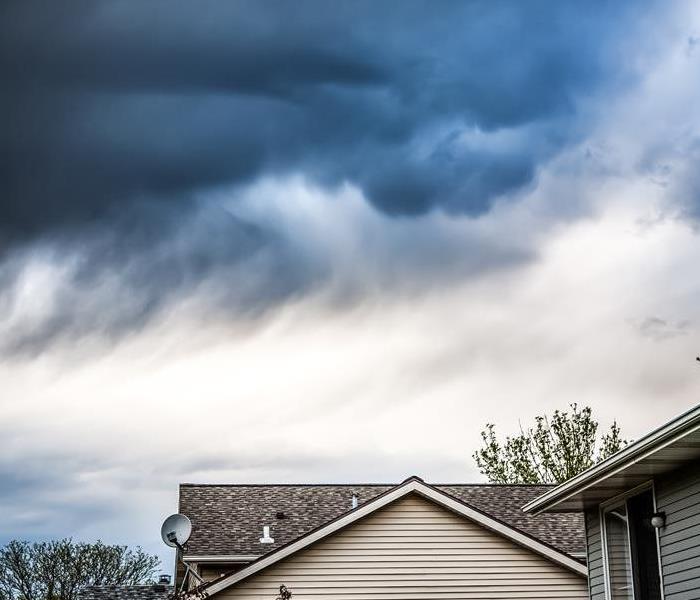 Promptly assess and address wind damage to ensure your property is safe after a storm
Promptly assess and address wind damage to ensure your property is safe after a storm
Wind damage is a common consequence of storms in the South Central region. Whether it's a hurricane, tornado, or severe thunderstorm, strong winds can wreak havoc on homes, buildings, and landscapes. After a storm passes, it's important to assess the damage to ensure the safety of your property and plan for necessary repairs. In this blog post, we will discuss what to look for when assessing wind damage after a South Central storm.
Roof Damage
Inspect your roof for signs of damage caused by strong winds. Look for missing or lifted shingles, cracked or broken tiles, or any visible gaps in the roof structure. Pay attention to areas around chimneys, vents, and skylights, as they are common entry points for wind-driven rain. Additionally, check your gutters and downspouts for debris or signs of detachment, as they play a crucial role in diverting water away from your home.
Windows and Exteriors
Check your windows and doors for any visible damage. Strong winds can cause windows to crack, shatter, or become dislodged from their frames. Inspect the caulking around windows and doors for any gaps or signs of wear, which can lead to water infiltration during storms. Test your doors to ensure they open and close properly, as excessive wind pressure can cause misalignment or damage to the hinges and frames.
Examine the exterior of your home or building for any damage to the siding or walls. Look for loose or missing siding panels, dents, cracks, or holes. Inspect the corners, edges, and seams for any signs of separation or damage. Wind can cause siding to become dislodged or compromised, which can lead to water penetration and further structural damage if not addressed promptly.
Trees and Outdoor Structures
Assess the impact of the storm on trees and your landscape. Check for fallen or uprooted trees, broken branches, and damaged vegetation. Fallen trees can cause extensive damage to structures and pose safety risks, so it's crucial to address them promptly. If you notice any leaning or weakened trees on your property, contact a certified arborist to evaluate their stability and recommend appropriate actions.
Inspect fences, decks, and other outdoor structures for wind damage. Look for signs of leaning, loose or missing boards, broken fasteners, or any structural compromise. High winds can weaken these structures, potentially making them unsafe to use. Assess the stability and integrity of your fences, decks, pergolas, and sheds to ensure they are capable of withstanding future storms.
Power Lines and Utilities
Exercise caution when inspecting the area around power lines and utilities, as they pose a significant safety risk. If you notice any downed power lines or damaged utility infrastructure, report it to the appropriate authorities immediately and keep a safe distance. Do not attempt to touch or move any electrical equipment or wires yourself.
Professional Assessment
While a visual inspection can help you identify obvious wind damage, it's a good idea to consult with a professional, such as a licensed contractor or building inspector, for a more thorough assessment. They can identify hidden or structural damage that may not be immediately noticeable to the untrained eye. A professional assessment can also provide a more accurate estimation of repair costs and ensure that all necessary repairs are properly addressed.
Assessing wind damage after a South Central storm is essential for the safety and restoration of your property. Carefully inspect your roof, windows, doors, siding, trees, and outdoor structures for any signs of damage. Ensure that any downed power lines or utility damage is reported to the appropriate authorities. For a comprehensive assessment, consider consulting with a professional who can provide expert advice and guidance on repair options. By promptly assessing and addressing wind damage, you can protect your property and ensure its resilience against future storms.
4 Things to Check for in the Wake of a Natural Disaster
1/18/2023 (Permalink)
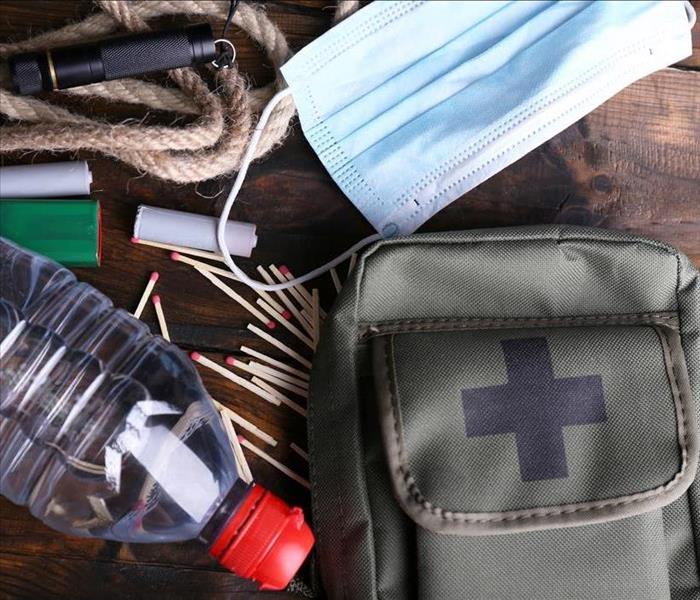 When a natural disaster strikes your Conroe home, it can be a scary time.
When a natural disaster strikes your Conroe home, it can be a scary time.
Natural disasters are unpredictable, and they can happen at any time. You never know when a storm is going to hit, but it's important to prepare for the aftermath. A storm can result in injuries and damage to property, so it's crucial that you take steps to protect yourself before the storm arrives. Here are four things you should do after a natural disaster:
Check for Injuries
Check for injuries and provide first aid. Injuries are a common occurrence following natural disasters. If you're at home when one of these occurs, it's important to be prepared to deal with medical emergencies. This includes keeping all first-aid supplies handy and knowing how to administer CPR.
Be prepared for a medical emergency. If you are injured and require emergency medical care, there may not be enough time or resources available at the moment of injury to provide adequate treatment—at least in the immediate aftermath of an event like this one. It's important that you have a plan in place so that others can get help if needed before professional services become available again.
Check on Neighbors
After a natural disaster, the most important thing to do is check on the safety of your family and neighbors. If you have children or elderly parents, make sure that they are safe and accounted for. Check on neighbors who may be home alone. If there is no response after knocking on their door, try calling them as well.
Consume Safe Food & Water
Do not drink water from the tap. It could be contaminated. Your best bet is to ensure you have gallons or bottles of water on hand before the storm hits and drink those in the aftermath.
Throw away food that may have come into contact with flood or stormwater. If power has been disrupted and your refrigerator was not running, throw out any perishable food in it (such as eggs and meat) that has been above 40 degrees Fahrenheit for two hours or more. You should also throw out any food stored at room temperature for two hours or more if there were power disruptions during that time period.
Prevent More Damage
If you've been affected by a natural disaster and your home has experienced damage, you want to make sure you address it quickly. First, check for damage in and around your home. Talk with your insurance agent and see what is and isn’t covered. They will have steps to follow to get your home restored. Ensure you take photos and document everything that is damaged. This will help with your insurance claim.
When a natural disaster strikes your Conroe home, it can be a scary time. Your first priority should be to make sure that you and your neighbors are safe and healthy. Give SERVPRO of The Woodlands/Conroe a call and we will help you get your home restored to its preloss condition in no time!
Commercial Generators Are Not the Same as Portable Ones
7/18/2022 (Permalink)
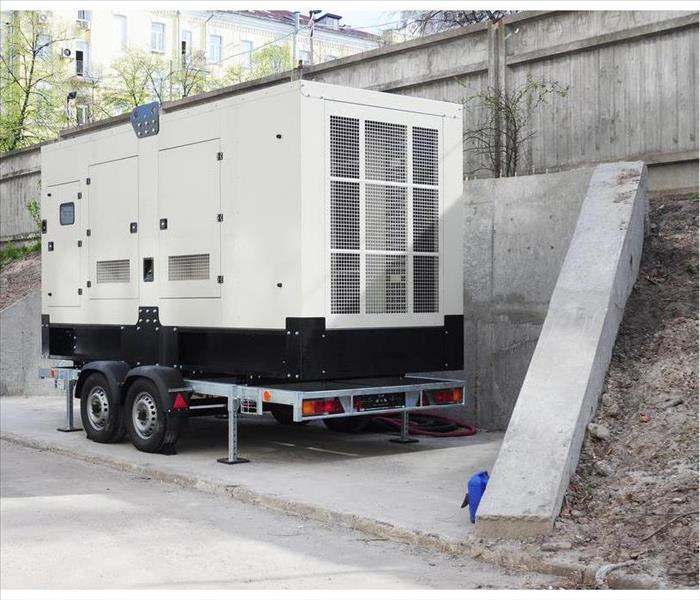 What kind of generator does your business need?
What kind of generator does your business need?
What kind of generator does your business need? There are many available, and it can be very confusing. Most of them are small, portable units meant for light applications or brief residential power outages. Typically, they’ll have less than 10,000 watts and will require hand-cranking.
However, businesses in Porter Heights,TX, often need something more substantial. In most cases, the ideal unit for mid-to-large operations is a standby diesel or natural gas one.
Types of Generators
Generators can cost a few hundred dollars – or a few hundred thousand. Some common features include
- Portable or fixed
- Standby on on-demand
- Diesel or gasoline
- Natural gas or propane
Portable Gasoline Generators Are Highly Economical
Small businesses using under 10,000 watts can often get by with a basic portable gasoline generator. These are often started by pulling on a rope, so they need to be run every other month so that they’re easier to crank up.
Some may include a battery for easy starting, so it’s important to keep that charged. You typically run extension cords to whatever needs power directly from the unit.
Most Businesses Need Standby Generators
Standby generators are designed to turn on automatically as soon as a power outage occurs. They can use either gasoline, diesel, natural gas or propane, and in some cases (such as natural gas), they may run indefinitely if connected to a local service pipeline. They’re required by law to be run through a transfer switch. Without one, it can electrocute line workers who are sent to fix the cause of the power outage.
Generator Problems
The easiest way to avoid problems is to get the correct unit. It should match your wattage needs and the best available fuel source.
Diesel generators usually last the longest. However, they require tanks and can run out of fuel. Many businesses are switching to natural gas, since pipelines are run in urban areas, allowing for indefinite use.
If you’ve had storm damage to your business that required the use of a generator, you’ll need to make an insurance claim for the repairs and hire an approved restoration company. SERVPRO is Faster to Any Size Disaster.
Flood Aftermath: 3 Ways the Professionals Will Clean and Disinfect Your Home
6/21/2022 (Permalink)
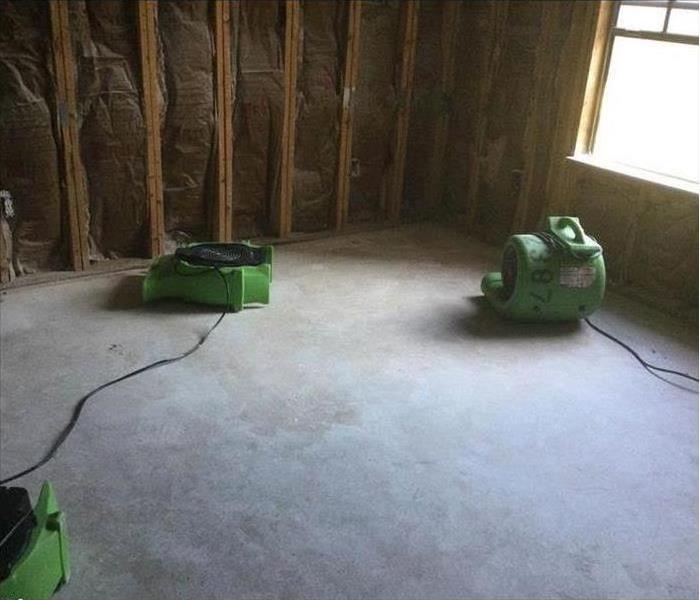 When placing drying equipment in your home helps prevent mold growth.
When placing drying equipment in your home helps prevent mold growth.
Flood Aftermath
If a flood has hit your Egypt, TX, home, you might wonder what steps to take. Because flood water is often full of harmful chemicals and raw sewage, you should never attempt to clean things up yourself. Instead, contact water damage specialists to repair and restore your house. Here are three ways they will clean and disinfect your home and ensure it looks as good as new.
1. Remove Soaked Materials
The experts cleaning your home will use protective gear and thick trash bags to properly dispose of everything that is damaged. Mold growth is a significant problem after a flood, and even something that might look okay on the outside could have dangerous growths on the inside, so many of your belongings must be thrown away.
Remember that sewage loss often occurs during floods, so there could be harmful bacteria on everything the water touches. Never grab something with your bare hands until a professional tells you it is safe to do so.
2. Prevent Mold Growth
After removing all of your damaged items, the professionals will air out your home and use industrial fans to help prevent mold from growing. As part of the mitigation efforts, they will also remove the drywall damaged in the flood. When removing the drywall, they will also take approximately a foot of wall above the water line to ensure there is little chance of future bacteria growth.
3. Scrub Walls and Floors
As the final step in the clean-up process, the professionals will scrub every surface with powerful cleaners and sanitizers to remove the surface dirt and kill any lingering bacteria that might harm your family. They will wear safety gear and use high-powered equipment that helps get the cleaning materials into every nook and cranny.
Dealing with the aftermath of a flood doesn't have to be full of fear and uncertainty. Relying on the professionals will have your home back up and running in no time, and you won't have to worry about potential mold growth in the future.
Best Practices for Storm Preparedness in a Changing World
4/18/2022 (Permalink)
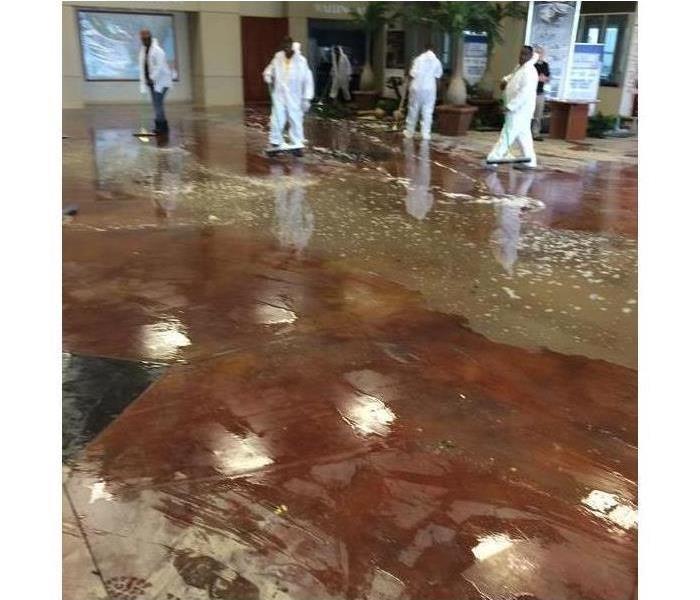 Storm damage in New Caney, TX.
Storm damage in New Caney, TX.
Storm Preparedness
It is a smart business that invests in disaster preparedness. In a changing world, as storms become more frequent and more damaging, companies find their assets under siege by hurricanes, tornadoes and damaging thunderstorms. Fortunately, with some smart actions, a company can develop a plan that better manages its risks in New Caney, TX. It all begins with quality insurance, the bedrock principle of business preparedness. A comprehensive policy provides reimbursements for damages caused by high winds, lightning strikes, hail damage and roof leaks. An insurance agent can help a company put together a strong policy that is customized to its needs.
The Importance of Restoration Services
If a storm does penetrate a company's building envelope, it is critical to take fast action. This is a crucial aspect of disaster preparedness. Working with a professional storm mitigation company can limit damages and reduce the expenses of cleanup. A professional company will do the following:
- Arrive on the scene quickly
- Make the property safe
- Remove standing water with wet vacuums
- Dry out areas with industrial fans
- Restore damaged areas
Quick cleanup by a professional team allows a company to get back to normal operations as quickly as possible. It also prevents secondary damage such as mold growth or harm to electrical systems.
The Opportunity to Safeguard a Building
Forward-thinking companies can also invest in property enhancements that protect a company against powerful storms. Strong storm windows are less likely to break under the pressure of high winds and hail. Well-maintained roof systems are unlikely to fail no matter how much rain pours down. Smart actions are also part of effective disaster preparedness. Attention to the outside of a property could include making sure outside furniture is secured. All companies should educate their employees on how to deal with emergencies, including safe places to go to and what authorities to call for help. A company with a plan is more likely to thrive after a storm.
Why Black Water Demands Immediate Remediation
3/25/2022 (Permalink)
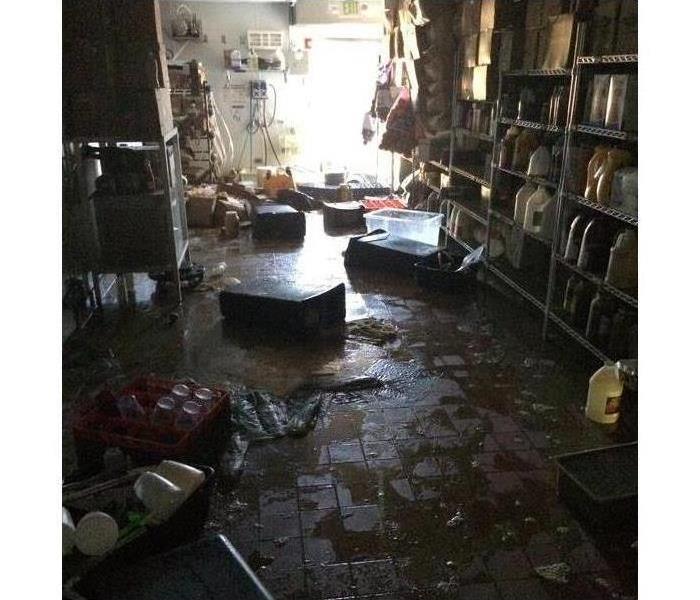 A flooded restaurant in Shenandoah, TX.
A flooded restaurant in Shenandoah, TX.
How Severe Is Your Commercial Building's Water Damage?
The answer to this resides in understanding that water exposure varies, with experts breaking fluid down into three main categories. The first is clean, resulting from freshwater busts. The next level focuses on low levels of pathogens; often, this saturation stems from appliance leaks. These first two sections demand cleanup, but they do not pose serious hazards. Category three fluid, however, is highly harmful to the structure, costs more to fix and demands prompt action. Here are three reasons to seek professional help immediately.
1. Major Exposure To Organisms
Category 3 penetration is better known as black water, coined for massive organisms found within the liquid. The moisture arrives into the establishment, carrying any or all of the following:
- sewage
- bacteria
- fungus
- organisms
Sources may come from inside or outside the place. Toilet backflow releases feces and urine onto the premises. External floods from rising waters wash in pathogens from the streets and sewer. No matter the origin. It's not anything you want within the space.
2. Contamination Spreads Quickly
On the surface, water damage appears simple. Perhaps owners see a stain or have a lingering smell; however, problems lurk below the surface. Water quickly absorbs into porous objects such as drywall, carpeting and belongings. Within 24 to 48 hours, the infestation has moved from a small spot to the entire room.
3. Major Remediation Is Needed
The flood, at this point, shuts down the impacted zone. A professional sewage and water restoration company in Shenandoah, TX, should assess the area. Air and wall samples are taken to understand what inhabits the zone.
Immediately, crews were to use industrial dehumidifiers to dry out the property. This act inhibits further growth. In addition, they complete flood cuts along the wall and tear out wet carpeting and other materials. These efforts must be made to secure the facility.
Before proprietors begin to tend to water damage, it's essential to know exactly what form of saturation has occurred. Category three fluid is harmful to the building, and it needs special care.
3 Safety Tips for Driving on Flooded Roads
1/11/2022 (Permalink)
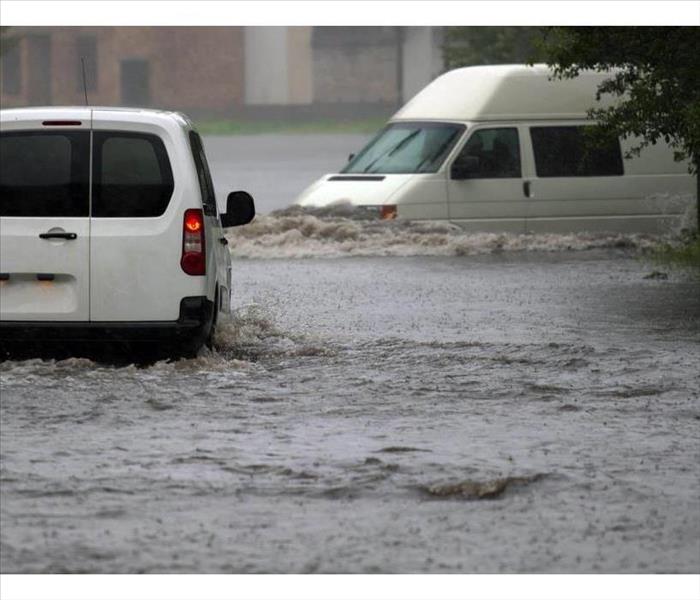 Avoid driving through a flooded street.
Avoid driving through a flooded street.
Driving on Flooded Roads: 3 Safety Tips
Flooding in Rayford, TX, can cause widespread damage to homes and other properties. However, few things are as fraught with danger than a flooded street. Water depth and swiftness can be difficult to gauge when driving and both can cause your vehicle to become trapped or swept away. If you encounter a flooded road while driving, there are a few safety tips you can keep in mind to ensure you get home safely.
1. Watch for Signs and Barriers
If strong thunderstorms have caused localized flooding, be aware of caution signs that alert drivers of dangerous areas. If you encounter a barrier across a flooded street, obey the posted signs that accompany it and turn around or follow any detour signs to avoid driving through the flooded area. Follow any directions flood damage and remediation service technicians give you if they happen to be working in the area.
2. Avoid Driving Through Standing Water
One of the most important travel tips to keep in mind while driving during a flash flood is to steer clear of standing water. This includes large puddles you might encounter in parking lots and highways. The depth of the water can be difficult to judge and could disable and damage your car if you try to drive through it. Flooded roads can also develop deep potholes and structural weaknesses that might cause you and your vehicle to become stranded.
3. Try to Reach Higher Ground
If you are driving on a road that starts to flood, try to drive in a direction that will take you to higher ground. If water levels start to rise, it is a good idea to pull over and move uphill on foot, away from flash flood waters, as your car’s tires may lose contact with the road if the water gets too deep.
Driving in Rayford, TX, can be a challenge during heavy rain, especially when you encounter a flooded street. Knowing how to stay safe can help you reach your destination without injury or damage to your car.





 24/7 Emergency Service
24/7 Emergency Service






